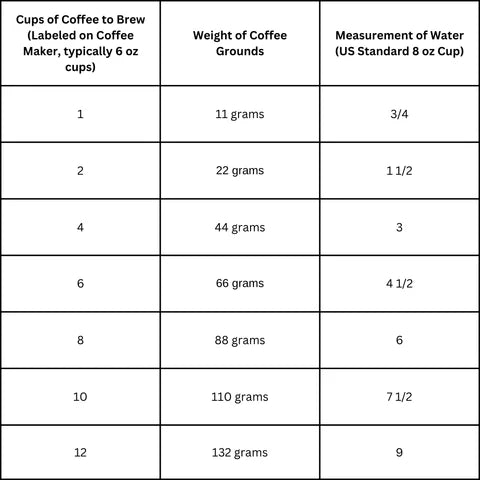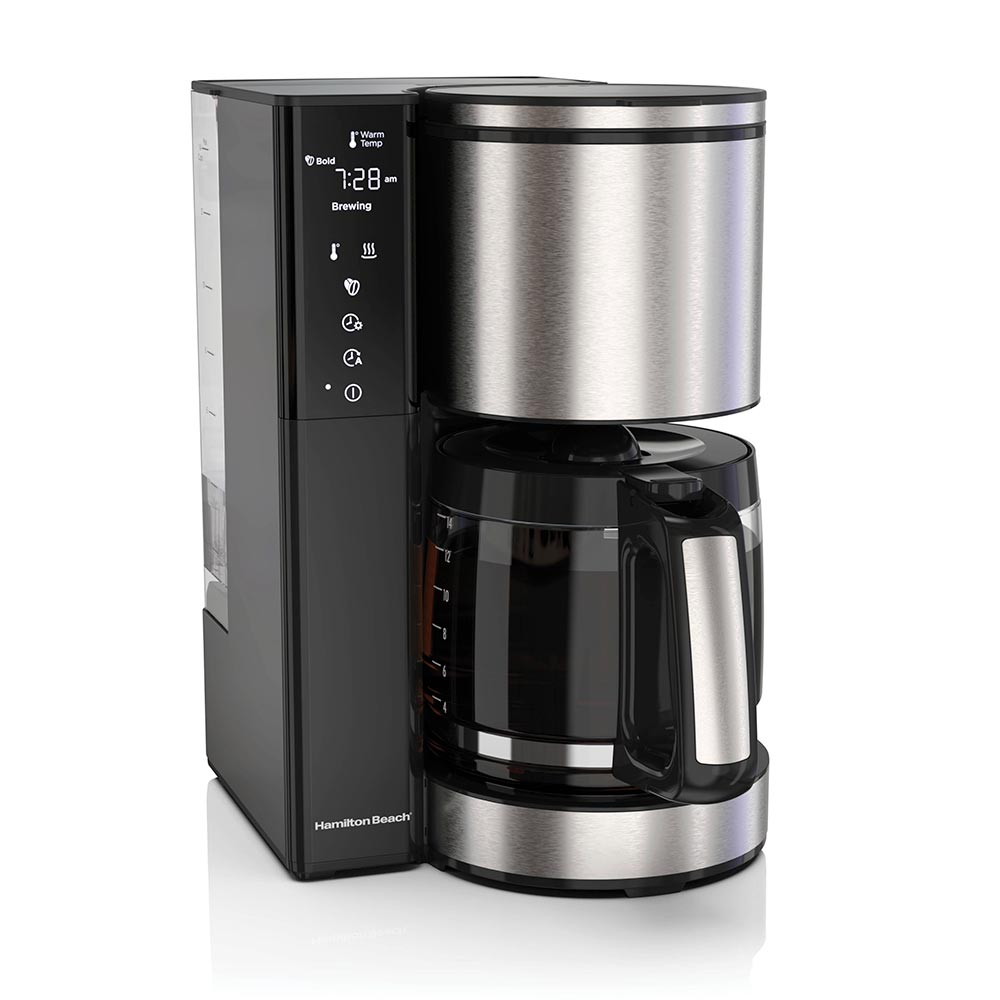To measure ingredients for coffee brewing, start with the coffee-to-water ratio. This ensures a balanced and flavorful cup.
Precision is key in brewing the perfect coffee. Coffee lovers know that the right measurements can make all the difference. Getting the correct coffee-to-water ratio is crucial for a delicious brew. Using too much or too little coffee can result in a weak or overly strong drink.
Accurate measurements ensure you get the taste you desire every time. In this guide, we will explore the best ways to measure your coffee ingredients. Whether you are a novice or an experienced brewer, these tips will help you achieve a consistently great cup of coffee.
Importance Of Accurate Measurements
Accurate measurements are vital for brewing a perfect cup of coffee. Small variations can affect the taste and quality. Precision ensures a balanced and enjoyable experience every time.
Consistency In Taste
Consistency in taste is crucial for coffee enthusiasts. Using precise measurements ensures each cup tastes the same. This helps in maintaining a routine. It also allows you to enjoy your favorite flavors consistently.
Avoiding Over-extraction
Over-extraction can make your coffee taste bitter. Accurate measurements prevent this issue. Using the correct amount of coffee and water is key. It helps in extracting the right flavors. This results in a smoother and more enjoyable cup.
Tools For Measuring Ingredients
Measuring ingredients accurately is crucial for brewing a perfect cup of coffee. The right tools can make all the difference. Two essential tools for measuring coffee ingredients are digital scales and measuring spoons. Both have their unique advantages and cater to different needs.
Digital Scales
Digital scales offer precise measurements. This precision ensures consistency in every cup. They are user-friendly and provide accurate readings. Place your cup or filter on the scale, then zero it out. Add coffee grounds until you reach the desired weight.
Most digital scales come with a tare function. This feature helps reset the scale to zero. It accounts for the weight of the container. Digital scales are perfect for those who want exact measurements.
Measuring Spoons
Measuring spoons are simple and easy to use. They are ideal for beginners. Each spoon indicates a specific volume, making it straightforward. Scoop your coffee grounds and level them off. This method is less precise than scales but still effective.
Measuring spoons are portable and don’t require batteries. They are also easy to clean. For those who prefer a quicker method, measuring spoons are a great option.
Using A Digital Scale
Using a digital scale can make coffee brewing more precise. It ensures you use the right amount of coffee grounds. This results in consistent and tasty coffee every time. Let’s explore how to measure ingredients with a digital scale.
Taring The Scale
First, place the empty container on the scale. Press the tare button. This sets the scale to zero. Now, you can measure the coffee without the container’s weight.
Measuring Coffee Grounds
After taring the scale, add your coffee grounds. Watch the numbers on the scale. Stop when you reach your desired amount. For a standard cup, use about 10 grams of coffee. Adjust this based on your taste preference. Using a scale helps you repeat the same great taste each time.
Measuring Water For Brewing
Hey coffee lovers! Today, we’re diving into an essential part of making the perfect cup: measuring water for brewing. Getting the water measurement right is key to a good brew. Too much or too little can mess up the taste. Let’s make it simple and easy to understand.
Volume Vs. Weight
First, let’s talk about volume vs. weight. You might wonder which is better for measuring water. Both methods can work, but they have different benefits.
- Volume: This is the most common way to measure water. You use cups, milliliters, or ounces. It’s easy and quick. For example, you might use a measuring cup to get 250ml of water.
- Weight: This method uses grams. It’s more precise because it considers the density of water. You’ll need a kitchen scale. For instance, 250 grams of water is close to 250ml, but it’s more accurate.
Want an example? Think of baking. Measuring flour by weight is more accurate than using cups. The same goes for water in coffee brewing.
Ideal Water-to-coffee Ratio
Next, let’s discuss the ideal water-to-coffee ratio. This is crucial for a balanced cup. Too much water and your coffee will be weak. Too little and it will be too strong.
Here’s a simple ratio to start with:
| Water | Coffee |
|---|---|
| 500ml | 30 grams |
| 1000ml (1 liter) | 60 grams |
Using this ratio, you can adjust based on your taste. Like stronger coffee? Use more coffee grounds. Prefer a milder brew? Add more water. It’s that simple!
Remember, practice makes perfect. Try different amounts until you find what works best for you.
I recently asked a barista friend about their method. They always use a scale for water and coffee. They said it makes a big difference in consistency. So, if you want to up your coffee game, consider trying this method.
Grind Size And Its Impact
Hey friends, today we’re going to dive into a crucial aspect of coffee brewing: grind size. The grind size of your coffee beans can make or break your brew. It’s like the foundation of a house; get it wrong, and everything else falls apart. So, let’s explore how to measure and adjust grind size to get that perfect cup of coffee.
Consistent Particle Size
Consistency is key when it comes to grind size. Imagine trying to cook rice with grains of different sizes; some will be overcooked while others remain crunchy. The same goes for coffee. If your grind size varies, some particles will over-extract and taste bitter, while others under-extract and taste sour. Yuck!
To achieve consistent particle size, you need a good grinder. Burr grinders are the best for this. They crush the beans evenly, unlike blade grinders that chop them haphazardly. Think of burr grinders as the fine chefs of the coffee world, delivering uniformity in every grind.
Adjusting For Brew Method
Different brewing methods require different grind sizes. It’s like adjusting your cooking techniques for different recipes. Here’s a quick guide to help you match the grind size to your preferred method:
- Espresso: Extra fine, like powdered sugar.
- Drip Coffee: Medium, like sand.
- French Press: Coarse, like sea salt.
- Cold Brew: Extra coarse, like peppercorns.
Why does this matter? Because the water needs to interact with the coffee grounds just right. For example, if you use a fine grind for a French Press, the water won’t flow properly, leading to a sludgy mess. Trust me, you don’t want that.
When I first started brewing coffee, I didn’t pay attention to grind size. My French Press coffee was always muddy, and my drip coffee tasted weak. Once I learned to adjust the grind size for each method, my coffee game changed completely. It’s like finding the missing piece of a puzzle.
So, next time you brew, take a moment to think about your grind size. It’s a small detail that makes a huge difference. Happy brewing!

Credit: www.drivencoffee.com
Common Mistakes To Avoid
Hey friends, today let’s talk about measuring ingredients for coffee brewing. It might seem simple, but it’s easy to make mistakes. These mistakes can really mess up your coffee. The good news? Avoiding these mistakes can make your coffee taste a lot better. Let’s dive into some common mistakes to avoid when measuring ingredients for coffee brewing.
Skipping Measurements
Some people think they can just eyeball the amount of coffee and water. Big mistake. Why? Because consistency is key to a great cup of coffee. Imagine baking a cake without measuring the ingredients. It would be a disaster. The same goes for coffee. Always use a scale to measure your coffee beans. And use a measuring cup for water. This way, you get the same great taste every time.
Inconsistent Measurements
Another common mistake is not being consistent with your measurements. One day you use a heaping tablespoon of coffee. The next day, it’s a level tablespoon. This leads to different tasting coffee each time. Not good. To avoid this, always use the same method to measure your coffee. Whether it’s by weight or volume, pick one and stick with it. I recently asked a friend to measure coffee beans for me. She used a spoon one day and a scoop the next. The result? Inconsistent coffee. Learn from her mistake and be consistent with your measurements.
Expert Tips For Precision
Measuring ingredients with precision is crucial for great coffee brewing. Even small changes in quantity can affect taste. Using precise measurements ensures consistency and quality.
Pre-weighing Ingredients
Pre-weighing your coffee beans and water can save time. It ensures you have the right amount ready. Use a good kitchen scale for this step. Digital scales are more accurate. Keep your beans in an airtight container. Measure them before brewing. This way, you avoid errors during the brewing process.
Calibrating Your Scale
Calibrate your scale regularly. This ensures accurate measurements. Place a known weight on the scale. Check if the reading matches the weight. If not, adjust the scale. Follow the manufacturer’s instructions for calibration. A well-calibrated scale gives you reliable measurements. This helps in maintaining consistency in your coffee brewing.

Credit: hamiltonbeach.com
Practical Examples
Measuring ingredients for coffee brewing is crucial. It ensures the perfect balance of flavors. Let’s explore practical examples to help you brew a great cup of coffee.
Brewing A French Press
For a French press, start with coarsely ground coffee. Use a ratio of 1:15. This means 1 gram of coffee for every 15 grams of water. For example, use 30 grams of coffee for 450 grams of water. Measure your coffee using a digital scale. This provides accuracy. Boil water and let it cool for 30 seconds. Pour it over the coffee grounds. Stir gently. Place the lid on the French press. Let it steep for 4 minutes. Press down the plunger slowly. Pour and enjoy your coffee.
Perfecting An Espresso Shot
Espresso requires finely ground coffee. Use a ratio of 1:2. This means 1 gram of coffee for every 2 grams of water. For example, use 18 grams of coffee for 36 grams of water. Measure your coffee using a digital scale. This ensures precision. Tamp the coffee grounds evenly. Place the portafilter in the espresso machine. Start the extraction process. Aim for a 25-30 second extraction time. This creates a balanced shot. Serve immediately.
:max_bytes(150000):strip_icc()/Simply-Recipes-Cold-Brew-Coffee-LEAD-16-428691bcdd594281b2f5dc6dbc8235e4.jpg)
Credit: www.simplyrecipes.com
Frequently Asked Questions
How To Measure Coffee For Brewing?
Use a coffee-to-water ratio of 1:16. Measure 1 gram of coffee per 16 grams of water. Adjust to taste.
Is A Coffee Scoop 1 Or 2 Tablespoons?
A coffee scoop typically measures 2 tablespoons. This standard size ensures a consistent and flavorful cup of coffee.
What Is The Ratio Of Coffee Ingredients?
The coffee ingredient ratio typically includes 1 part coffee to 15-18 parts water. Adjust to taste preference.
How Much Coffee Do I Put In A 12 Cup Coffee Maker?
Use 1 to 2 tablespoons of coffee per cup. For a 12-cup coffee maker, use 12 to 24 tablespoons.
Conclusion
Achieving the perfect coffee brew starts with accurate measurements. Use a kitchen scale for precise results. Consistency is key in coffee brewing. Experiment with different ratios to find your preferred taste. Always use fresh coffee beans for the best flavor.
Remember, practice makes perfect. Happy brewing!

Rakib Sarwar is a seasoned professional blogger, writer, and digital marketer with over 12 years of experience in freelance writing and niche website development on Upwork. In addition to his expertise in content creation and online marketing, Rakib is a registered pharmacist. Currently, he works in the IT Division of Sonali Bank PLC, where he combines his diverse skill set to excel in his career.
